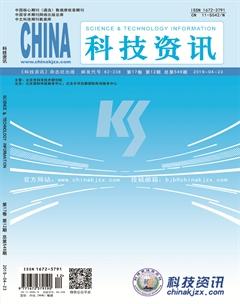基于邊際效益遞減規律的城市土地利用效率階段評價
胡少華
摘? 要:城市土地利用效率是合理配置利用我國有限土地資源的重要依據。為評價城市土地利用效率,該文提出了基于邊際效益遞減規律的城市土地利用效率階段評價指標,并將其運用于實證研究。在對中國大陸除西藏外的30個省、自治區、直轄市的城市土地利用效率階段評價分析后得到以下結果:時間上,城市土地利用效率較高區域數量增長緩慢,大部分區域城市土地利用效率較低;空間上,1995、2000年度城市土地利用效率較高區域在主要集中于東部地區,2010、2015年度主要集中于中部地區。因此,當前城市土地利用問題的關鍵是調整東西部低效率區域的城市土地利用技術水平及資本、勞動力的投入,進而達到提升東西部低效率區域城市土地利用效率階段的目的。
關鍵詞:城市土地? 效率? 邊際產出? 階段
中圖分類號:F301 ? ?文獻標識碼:A ? ? ? ? ? ? 文章編號:1672-3791(2019)04(c)-0189-07
Abstract: Urban land use efficiency is an important basis for rational allocation and utilization of China's limited land resources. In order to evaluate urban land use efficiency, this paper puts forward an evaluation index of urban land use efficiency based on the law of diminishing marginal benefit and applies it to empirical research. After the stage evaluation and analysis of urban land use efficiency in 30 provinces, autonomous regions and municipalities in mainland China except Tibet, the results are: From the perspective of time, the number of regions with higher urban land use efficiency grows slowly, and most regions of urban land use efficiency are low; From the perspective of space, in 1995 and 2000, the regions with higher urban land use efficiency were mainly concentrated in the east area, while in 2010 and 2015, the regions with higher urban land use efficiency were mainly concentrated in the central. Therefore, the key to the current urban land problem is to adjust the technical level of urban land use and the input of capital and labor in the low efficiency areas in the east and west,then the purpose of improving the efficiency of urban land use in the low efficiency areas in the east and west can be achieved.
Key Words: Urban land; Efficiency; Marginal output; Phase
1? 文獻綜述
隨著中國城市化進程加快,城市土地面積不斷擴大[1],在這種背景下,城市土地與農用地、各類生態用地之間的矛盾不斷加劇[2]。鑒于此,應依據城市土地利用效率合理進行土地資源配置[3],國內學者選取了不同指標進行城市土地利用效率的評價,主要包括平均單位面積產出指標[4],基于DEA方法的全要素效率指標[5],基于SFA方法的單要素效率指標[6],土地邊際產出指標等[7]。但以上指標在評價城市土地利用效率時存在一定局限性,其中從平均角度衡量城市土地利用效率平均單位面積產出指標雖然簡單,但是無法與土地利用的環境相結合起來進行研究;以DEA法計算的全要素效率指標以比值的形式對城市土地效率進行了評價,但摻雜了過多的土地要素之外其它要素影響;以SFA法計算出的土地單要素效率比值不是絕對值,不能反映單位土地帶來的絕對值產出;以土地邊際產出作為評價土地利用效率的指標是將其他條件固定時,土地變化所帶來的產出,但還需要結合土地利用的具體環境評價這種產出的優劣。
綜上所述,該文將基于邊際效益遞減規律階段性評價城市土地邊際產出優劣,并從時空角度分析城市土地利用中存在的問題,為城市土地的配置和利用提出科學合理的意見建議。
2? 數據來源與數據處理
2.1 數據來源
為評價城市土地利用效率,該文收集了1985—2015年度除香港、澳門、臺灣、西藏外的30個省、自治區、直轄市的相關數據,以城市建成區面積代表城市土地,以二、三產業國內生產總值代表城市土地產出,以二、三產業從業人員數量代表城市土地勞動投入,以固定資本存量代表城市土地資本投入。城市土地數據來源于中國城市統計年鑒,二、三產業國內生產總值,二、三產業從業人員數量及全社會固定資本投資來自各研究區域的統計年鑒,固定資本存量是在全社會固定資本投資的基礎上采用永續盤存法計算后獲取。

